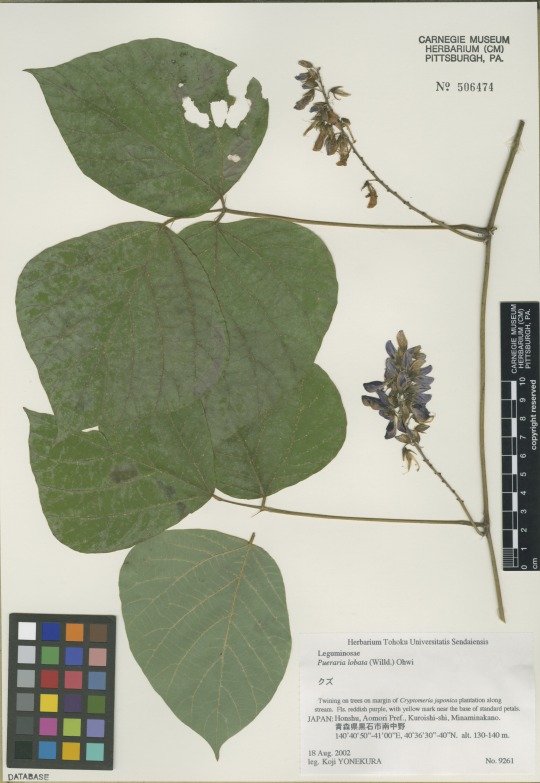
Kudzu is one of the more
well-known weeds, at least by name, sometimes known as “the vine that ate the
South.”
Collected on October 13, 1997, this specimen was found by Sue Thompson and
Bonnie Isaac near the I-376 Squirrel Hill Tunnel, Pittsburgh. Kudzu (Pueraria lobata) was introduced to the
United States as an ornamental plant in 1876 at the Centennial International
Exhibition in Philadelphia. The vine was initially prized in the South to
provide shade.
The vine was later promoted
for use in erosion control. Although
listed as a noxious weed in Pennsylvania, it is more invasive in southern
states. There, it has been estimated to spread at a rate of 2,500 acres per
year (some say up to 150,000 acres per year, although this estimate has been
questioned).
Infestations of this plant undoubtedly cause ecological and
economic damage. Below is another specimen of kudzu, collected in its native
range in Japan in 2002.

Botanists at Carnegie Museum of Natural History share
pieces of the herbarium’s historical hidden collection on the dates they were
discovered or collected. Check back for more!
